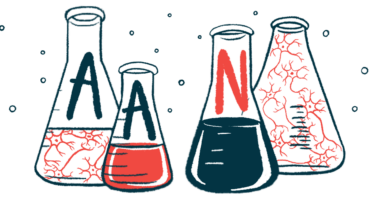Early Extubation After Thymectomy Improves Outcomes, Study Suggests

Myasthenia gravis (MG) patients who undergo thymectomy — surgery to remove the thymus gland — have a reduced risk of pulmonary infection and a shorter stay in intensive care when taken off mechanical ventilation support, called extubation, within six hours after surgery, a study suggests.
The study, “Early extubation after thymectomy is good for the patients with myasthenia gravis,” was published in the journal Neurological Sciences.
MG is an autoimmune disease characterized by muscle weakness and muscle atrophy (shrinkage) due to the production of self-attacking antibodies against key proteins in the formation and maintenance of neuromuscular junctions, the site where nerve cells and muscles communicate. These proteins include the muscle-specific tyrosine kinase (MuSK) and the acetylcholine receptor (AChR).
It is estimated that 10% to 20% of patients with MG develop underlying thymoma, a tumor in the thymus, and 60 percent develop thymus hyperplasia or dysplasia, an increase in the thymus cell numbers. Because the thymus is involved in the maturation of immune cells, surgery to remove the thymus helps reduce autoimmune disease both in the absence or presence of a tumor.
The most common surgical approach in these cases is called “fast-track surgery,” which applies early extubation to reduce the need for a medical ventilator and nurse support. Extubation is the removal of a tube previously inserted in a patient’s airway that allowed artificial ventilation during surgery.
However, optimal timing for extubation is still not known. In order to assist physicians in decision-making regarding this matter in MG, a team of researchers looked for differences in the procedure outcome regarding early or late extubation. They considered early extubation if the procedure was performed less than six hours after surgery; late if the procedure was done after six hours.
The trial (NCT03468452) included 96 adult patients, median age 30, with a confirmed MG diagnosis (median disease duration was two years) who underwent thymectomy.
There were 53 patients in the early extubation group and 43 in the late group. Patients in both groups had similar clinical and demographic characteristics, but disease duration was was significantly longer in the early extubation group (median 24 months) compared to the late extubation group (12 months).
Despite that, researchers observed that patients in the early extubation group underwent significantly fewer re-intubation procedures compared to the late group — 11.3 and 37.2 percent respectively.
Early extubated patients also had fewer pulmonary infections, 11.3 compared to 39.5 percent in the late group. Moreover, the stay in the hospital’s intensive care unit was shorter for the early group compared to the late one — a mean of 4.3 hours versus 6.4 hours.
Overall, “we conclude that early extubation after thymectomy is feasible in patients with MG,” they stated. “Early extubation reduces the risk of postoperative pulmonary infection and the length of stay in the [intensive care unit].”






